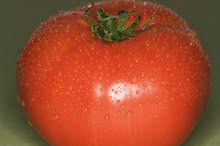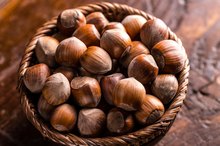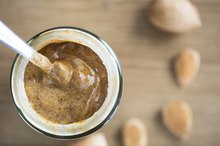What Foods Should You Stay Away From If You Have Pollen Allergies?
People with pollen allergies may take pains to prevent the sneezing, wheezing, itching and general discomfort precipitated by the great outdoors during the spring, summer and autumn months. However, pollinating trees, grass and weeds are not the only culprits to incite hay fever’s undesirable symptoms. For many seasonal allergy sufferers, the ingestion and handling of certain foods also can instigate allergic reactions. Avoiding these foods may prevent these reactions.
If you are experiencing serious medical symptoms, seek emergency treatment immediately.
Oral Allergy Syndrome
Oral allergy syndrome, also known as pollen-food syndrome, is an allergic reaction caused by certain fruit, vegetable and nut proteins, which resemble the proteins of the pollens linked to hay fever 2.cause:
- Oral allergy syndrome
- also known as pollen-food syndrome
- is an allergic reaction caused by certain fruit
- vegetable
- nut proteins
- which resemble the proteins of the pollens linked to hay fever 2
When your body fails to differentiate between pollen and food proteins, a cross-allergy occurs. Given the varied pollen proteins, the type of tree, grass or weed allergy you suffer from dictates which foods may trigger a cross-allergic reaction. These trigger foods cause greater trouble during the spring or early fall seasons, when the air is heavy with the culprit pollen. More prevalent among older children and adults, this syndrome afflicts up to 10 percent of individuals with hay fever.
- Given the varied pollen proteins, the type of tree, grass or weed allergy you suffer from dictates which foods may trigger a cross-allergic reaction.
- These trigger foods cause greater trouble during the spring or early fall seasons, when the air is heavy with the culprit pollen.
Symptoms
What Causes Allergies to Cilantro?
Learn More
Symptoms of oral allergy syndrome usually show themselves within minutes after eating or touching the trigger food 2. It's often characterized by burning and itching around the lips, mouth and throat, and additional symptoms include:
- watery
- itchy eyes
- runny nose
- sneezing
Upon touching a food trigger, you may experience a rash, itch or swelling on your skin.
Cross-Reactive Foods, Tree Pollen
Among people with pollen allergies, those affected by birch pollen are most likely to experience oral allergy syndrome. Fruits that cross-react with birch pollen include:
- carrots
- celery
- parsley
- peanuts
- soybeans
Birch pollen cross-reactivity has also been observed with almonds, hazelnuts and the spices aniseed, caraway, coriander and fennel. If you suffer an allergy to alder, elm or hazel tree pollens, you may also be vulnerable to cross-reactivity with these foods.
Cross-Reactive Foods, Grass and Weed Pollen
Raw Almonds and Swollen Lips
Learn More
Several spices also cross react with mugwort pollen: aniseed, black pepper, caraway, coriander and fennel.
Additional Considerations
The method of food preparation also has an impact: Raw and fresh fruits and vegetables tend to irritate whereas cooked fruits and vegetables may not. According to the Association of Allergists and Immunologists of Quebec, this discrepancy is related to the proteins’ low tolerance to heat 1. Nuts, however, pose an equal threat of cross reactivity whether cooked or raw. Because skins are believed to be more allergenic than other plant parts, peeling fruits and vegetables may prevent a reaction or reduce the reaction’s severity. If you wish to pinpoint cross-reactive foods for your pollen allergies, consult an allergist.
- The method of food preparation also has an impact: Raw and fresh fruits and vegetables tend to irritate whereas cooked fruits and vegetables may not.
- Because skins are believed to be more allergenic than other plant parts, peeling fruits and vegetables may prevent a reaction or reduce the reaction’s severity.
Related Articles
References
- The Association of Allergists and Immunologists of Quebec: Pollen-Food Syndrom
- American Academy of Family Physicians: Food Allergies
- Seattle's Children's Hospital. Food allergy. Updated March 8, 2020.
- American Academy of Allergy Asthma & Immunology. Oral allergy syndrome (OAS) or pollen fruit syndrome.
- Mastrorilli C, Cardinale F, Giannetti A, Caffarelli C. Pollen-food allergy syndrome: A not so rare disease in childhood. Medicina (Kaunas). 2019;55(10):641. doi:10.3390/medicina55100641
- Kashyap RR, Kashyap RS. Oral allergy syndrome: An update for stomatologists. J Allergy (Cairo). 2015;2015:543928. doi:10.1155/2015/543928
- Katelaris CH. Food allergy, and oral allergy or pollen-food syndrome. Current Opinion in Allergy and Clinical Immunology. 2010;10(3):246-51. doi:10.1097/ACI.0b013e32833973fb
- Webber CM, et al. Oral allergy syndrome: a clinical, diagnostic, and therapeutic challenge. Ann Allergy Asthma Immunol. 2010;104:101-108. doi:10.1016/j.anai.2009.11.007
Writer Bio
Jessica Reuling has been a freelance writer since 2004. Her writing has been featured on Amazon.com. Her areas of expertise include vegetable gardening, home decor, green living and yoga. Reuling earned a Bachelor of Arts in English from Lewis and Clark College in Portland, Ore.









